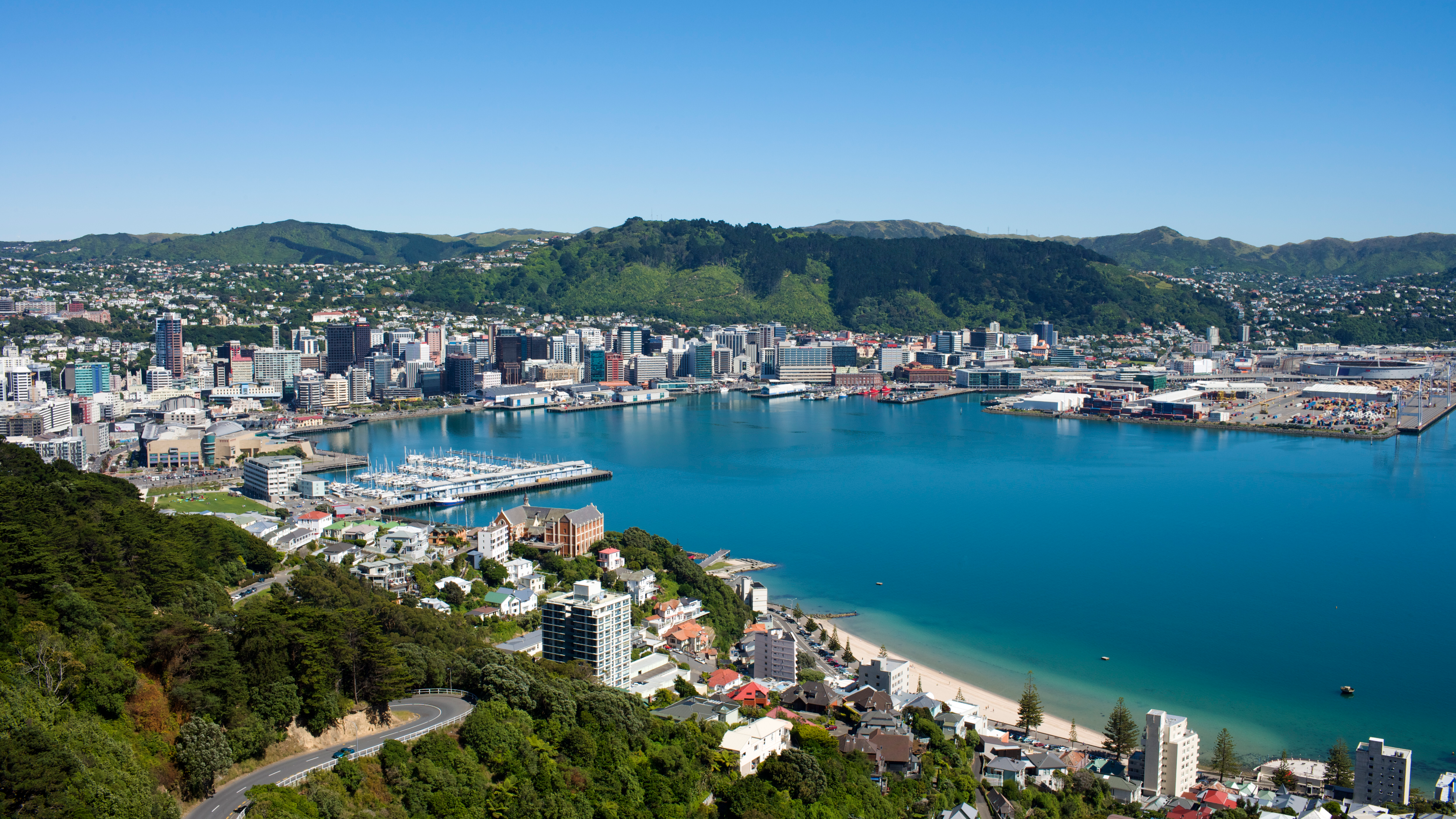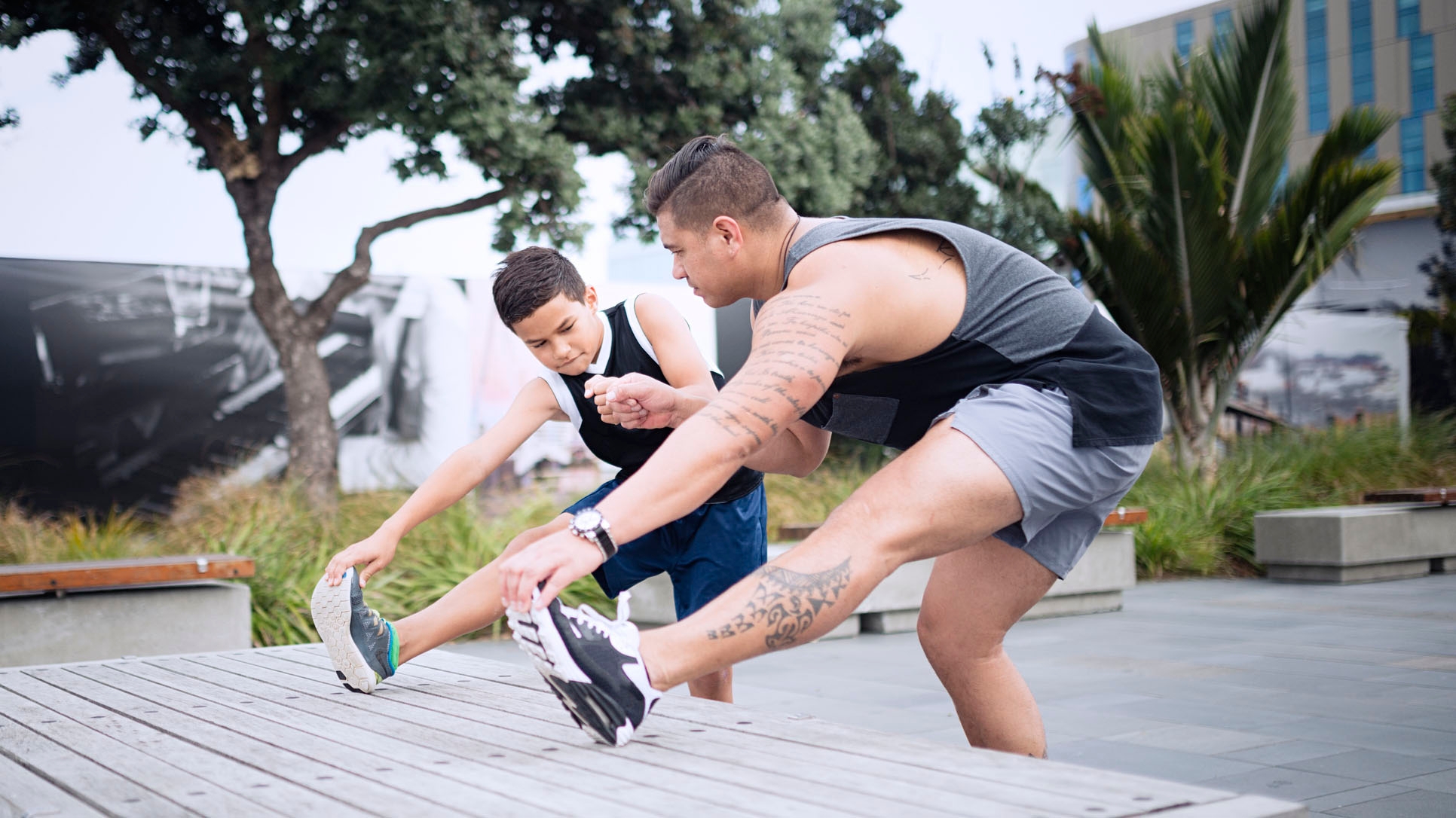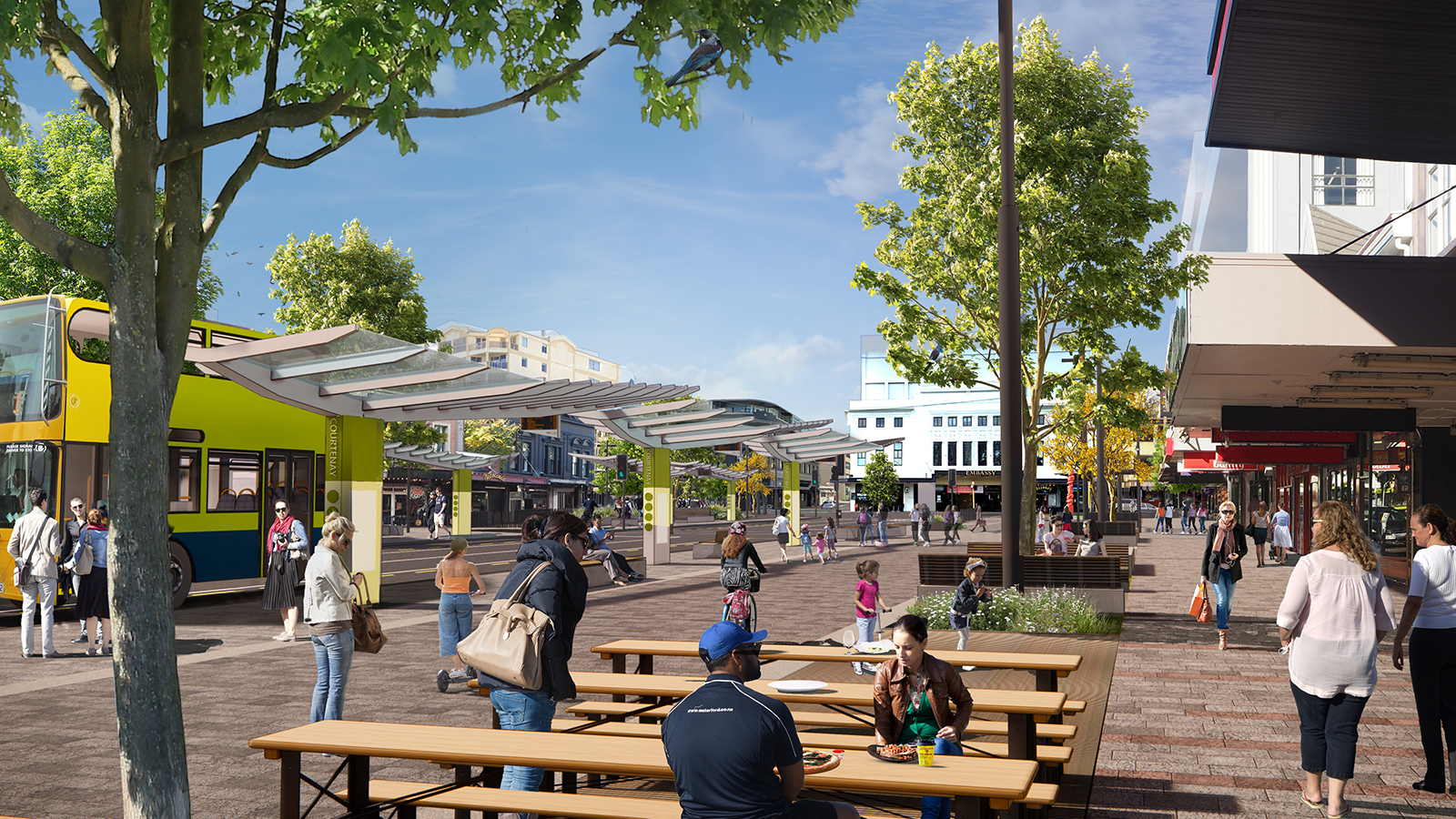Feature article
What Wellington could look like as a city of the future
What changes will we see in the future? We gather the thoughts of local visionary thinkers.
Wellington’s reputation as the coolest city in the country and its status as the capital of Aotearoa New Zealand is something most of its residents treasure and value.
But how is Poneke going to grow and evolve in the coming decades with climate change and sea level rise giving this harbour city its share of challenges?
“As we go deeper into the 21st century, each city, in this linear country, will have to understand its role,” says Katherine Skipper, principal of architecture firm Warren and Mahoney in Wellington. And the residents of this quirky town will be called on to innovate.
Wellington’s compactness can be its strength, says the architect who says the city has led the world on base isolation, a tool invented by local scientist, Bill Robinson, used to keep buildings standing in a seismically live region and there’s more ingenuity to come.
“We’re a city of innovators and we’ve got to be innovative in this horizon of 50 to 100 years. It’s going to be about working with the natural environment, which is going to be changing whether we like it or not,” she says.
‘We need to do it in a way that will work for communities. The joy in Wellington is to find reasons for more people to want to come and live here again,” says the architect lead.
Former mayor Justin Lester, now Government Director at DOT loves Data, predicts urban density will shape the city and its “buzzi-ness”, and it will remain a tight geographical form that is highly walkable, with large parts of the population living within walking distance of the city.
When it comes to climate change, the waterfront may turn into sand dunes, Wellington may lose some of Island Bay and the city will become denser with more apartments, he says. “There’s no reason suburbs can’t look like San Francisco or the CBD like Hong Kong, as long as you build appropriately,” says Justin.
Many expect we'll see major changes to the waterfront in the future.
Future inspiration: buildings that lift up and grow and reduce
First Light Studio architect, Nick Officer, says Poneke’s buildings will need to be adaptable to climate, to respect the tsunamis, he says. “There will need to be buildings that virtually lift up on their feet, move and are adaptable. We’re seeing tornados on the Kāpiti Coast, how could buildings shut down? We will need to have living buildings that have gardens on the rooftop to grow food and collect water,” he suggests.
What we do too often is think about the world today, not about what it’s likely to be, Nick finds. “It’s time to think about how we create buildings that could move, rise and flex, that change with the owner, that come in shells that go up and down in size,” he explains
“The hundred year way is making sure the building is supporting the function of the people who live in them,” adds the architect.
In terms of housing, small apartments won’t fit the bill. “What we’re missing is family-sized apartments. Imagine buildings with a level per household, these buildings will be about bringing families together,” says the architect.
Fellow First Light Studio architect, author and Victoria University lecturer, Guy Marriage is an advocate of medium density architecture, which you can see in cities like London and Minsk. He says he’d like to see a rebuilding of Wellington’s suburbs, not trying to pack them in, but with very good multi storey housing woven in.
“Wellington needs to densify hugely,” says Guy. “I imagine buildings rebuilt at four storeys, with high densification, better quality and better designed for sun.”
The thought leader sees a big future in cross-laminated timber buildings, which is one-fifth the weight of concrete. You can build medium height buildings very easily with it and it’s structurally very seismically strong, says the architect.
As our city becomes more dense, green spaces and rooftop gardens will be key for a sustainable future.
Pedestrians taking Poneke back
If more people are going to live in the city centre, a future Wellington needs more recreational spaces and less priority for vehicles, says Angela Foster, director and urban designer with Foster + Melville Architects. “Let’s take the city back to the 1930s when it was trams and people, open streets and just a few vehicles,” she says.
Strasbourg, in France, is a city with narrow 3 to 4 metre streets with paving, and there the cars wait, they go slow, while pedestrians dominate, explains Angela.
The architect would like to see Wellington built with more awareness of its environment. Other cities have challenging weather, she says. And rather than big parks, people need lots of little spaces, mini stages, near Civic Square for instance, where you can sit around on different levels. Vancouver, which is windy, has a number of pocket parks, covered areas, greenery and shelter. All you need is to light it well, says Angela.
Hannah Hopewell teaches landscape-led urbanism at Victoria University of Architecture with degrees in urban design, spatial design and landscape architecture. Also a landscape urbanist with TOA Architects, she would like to see more house boats at sheltered spots like Point Jerningham, in a similar way to the on-water living in San Francisco’s Sausalito. Housing product in Poneke will be more diverse and include tiny houses and self-build homes, she adds.
The inner city will begin to prioritise people and living spaces over vehicles.
Urban centres like Wellington are going to identify more physically with the Māori world view, (te ao Māori) adds Hannah. She expects to see houses more collectively organised and owned. “You’ll see cluster models of housing that support intergenerational living and will support the environment as well,” says Hannah.
Building a Māori-Pakeha environment for Poneke
Wellington City Council Tātai Heke Māori (Chief Māori Officer) Karepa Wall is looking forward to a future where Māori’s local identity and history is incorporated into the decisions the council makes around buildings and spaces throughout Poneke.
Building an identity where you feel like you’re entering a Māori-Pakeha integrated environment like Rotorua is something to aspire to, he says. “It’s all about fluency and hearing it in the city,” Karepa explains.
A stake in the sand was made around four years ago with mana whenua to make Poneke the only bilingual capital city in the world, by 2040, says Karepa.
One of the new spaces in the city incorporating Mana Whenua identity and history is the new Tākina Convention Centre across the road from Te Papa. Built on one of the biggest Pā sites for Taranaki Whānui, tākina means to summon and connect, and refers to the wind that’s the city’s most powerful source.
Pā used to be transitional places, moving from one place to another depending on growing conditions; they might move up and down a street, says Karepa. This transitional concept could be the foundations for the next big development opportunity for the council and mana whenua, he says.
What does public housing look like through a Māori lens? It might be apartment buildings that are multi-family, have community gardens and are run as a community.
“If we were doing something like this on Willis Street, it might have a community Māori language speaking hub, including a youth hub on the ground floor,” suggests Karepa.
“Let’s think of Poneke as a blank canvas. Let’s not just build a city, let’s do something innovative, something that creates the best environment for everyone, especially those who come after us,” he says.
A futuristic occupation of the the city
To Three Line Studio architect Amanda Bulman, it’s simple. Her future Wellington is all about the domestication of urban space.
“You’ve got to take it and live in it, become super focused on the occupation of the city. Forget about densifying in the suburbs, that’s a red herring,” says the architect.
The traffic has to go, she adds. “That gets phased out so we occupy our streets again, it’s fundamental. Every city that’s done it in the world has thrived, that’s preparation for our future,” says Amanda.
Render of Courtney Place looking towards Embassy Theatre. Images provided by Let's Get Wellington Moving.
The key priority of future cities is about how we frame what we do, she explains. The architect sees there being a complete seamlessness between life and work in future city living. “If we enjoy our work, there is work life balance. Our cities at the moment are occupied from 9 am to 5 pm, and then they become dead,” says the architect.
“We should be living when we’re working, it’s not about offices and hard programming, it’s about soft programming. Your work brings value whether you’ve done 40 hours a week (or less). This is still your contribution.”
“If this thinking changes, then we’re creating these strong connections rather than leaving work at 5 pm having done your penance and going on to your life. That’s not sustainable long term,” says Amanda.
Creative ideas from Massey University students on living with climate change
“We don’t have a choice but to do something different. We don’t have time for incremental changes, we need a paradigm shift,” says Massey University senior lecturer in the School of Design, Jennifer Archer-Martin.
The spatial design lecturer’s work with students has sparked some ideas for future Wellington which have heartened her. One student has looked at Oriental Bay beach, asking what might happen if sea level rise and climate change resulted in the beach and the road disappearing. Samantha Spencer has designed a series of floating islands for play, where people could do all the activities currently done on the beach or waterfront. The islands are inspired by clumps of flax and toetoe which, after the 1855 earthquake, floated out into the harbour from the swamp that existed where the Basin Reserve is now. “What this says is, our world will change but we can adapt and even flourish,” says Jen.
Another of her Massey students, Luca Crampton, meanwhile, is reimagining the whole layout of the Hutt Valley, rewilding it and concentrating it into three zones. The zones are sited on the hills, where the old wetlands were, and along the river banks, and are about looking at how structures that can house people can also amplify and regenerate the natural environment, says Jen.
“Rather than trying to bring nature back into the city, the idea is to flip the thinking, so landscapes return to cities, then we find ways to dwell within those landscapes,” she explains.
As for the way new buildings are built, the senior Massey lecturer believes any new building should be built with components which can be reused in other buildings, so it’s all part of a future circular economy. “We have to be designing for transition and ongoing transition, ” says the spatial designer.
Brainstorming from Wellington artists
Wellington is a city of artists and William (Bill) Carden-Horton, cultural anthropologist and artist, predicts the capital of the future will be a font of creativity and sustainable innovation in the decades to come.
Poneke would have a wide number of meeting spaces, work spaces, privacy spaces and collaborative project spaces with gallery space for show and tell. And a new kind of retail which is all about entertainment, combined with eating, seeing, working and teaching, each in “combo hubs”.
And on every city corner, there will be urban farms to feed schools, restaurants and local homes, says Bill. The city would be off grid, powered by community-generated power of waves, surf, wind, solar and manure, he envisions. Meanwhile, people will be working a 3.5 day week so they have more time to grow and make food, work on personal projects and get into nature close by.
Novelist, Brannavan Gnanalingam, hopes to see the capital become a more liveable space for artists and hospitality workers.
The Hutt is the place to look for future trends, say urban planners
The key to a successful city of the future is that people have to have job opportunities, says town planner Tom Anderson from resource management consultancy, Incite. Without people, you don’t have the vibrancy, he says. “If Wellington City Council gets that density right then it’s going to be fantastic,” says Tom.
And then it will be about making the most of public parks, he adds. Public spaces don’t have to be single purpose, an outdoor theatre in Wellington’s Botanic Garden, for instance, could be used for a variety of events, he suggests.
Places like the Botanical Garden's could be utilised for a number of large events.
The planner is open to ushering in the new in a future Wellington when it comes to housing. “The old housing stock in Mt Vic and Thorndon, those houses were a product of their time. To get density, there needs to be something new from a design perspective,” says Tom.
Further afield, given a limitless budget and strong demand, Tom sees a tunnel through the Remutaka Range connecting Wellington to the food basket of the Wairarapa in a future Poneke.
To see what’s possible when it comes to housing density look at what’s happening in the Hutt Valley which is embracing the density concept, advises the Incite director.
Urban planner and urban designer at The Urbanery and Victoria University industry liaison coordinator, David Batchelor agrees. “Wainuiomata and Waiwhetū in Lower Hutt have now become the testing pot for new Aotearoa urbanism,” says David. By 2050, he would love to see three storey terraced homes or higher near the inner city of Lower Hutt to add to what’s happening with the RiverLink project, which is turning the Hutt to face the river, creating a new waterfront for the city.
David likes urban schools in France where a building that looks like a big apartment building is in fact a multi-storey school. “I’d love to see that type of vertical everyday living,” he says.
But this isn't just a copy and paste from overseas examples, he stresses. “I would encourage New Zealand and developers to aspire to create a New Zealand urbanism, one where the houses serves a population of Māori and Pasifika, with bigger families. “We should have NZ urbanism that’s boldly local,” he adds.
Anna Harley, the Principal of Urban Regeneration at The Property Group, is looking forward to seeing a better connection from Kent and Cambridge Tce down to the south coast.
This southern spine of the city, once it’s being serviced with an amazing Mass Rapid Transport system that’s being proposed, will be an absolute game changer, says Anna. “It’’ll be like having the cable car to the south coast.”
The urban designer looks to Holland for possible options of what’s next for the city facing sea level rise.
“The Netherlands has the most amazing response to embed water and we’re going to have to move to be a bit more like that. On every piece of infrastructure you’ll have green roofs, and rainwater capturing for urban food production,” she says.
“As the climate changes, we’re going to need a green city, with pocket parks, rain gardens to help improve impacts of wind and water management. It’ll also provide for intensification that’s going to occur, she says. “Green roofs or solar panels will have to be on every building, we should be doing that now.”
Anna predicts suburbs like Karori will start to expand its town centre, supporting the low carbon future of people walking to their local shops.
What Wellington City Council chief planning officer says is coming
Wellington City Council chief planning officer, Liam Hodgetts, notes that Wellington has some of the densest urban environments in New Zealand.
Liam, who grew up in Auckland and has lived in Melbourne and London, says he couldn’t think of a more lively city than Wellington.
“What makes Wellington city so cool is its density and more housing growth close to it means it’s only going to get better,” says the chief planner. It’s what makes Wellington great while Auckland by comparison will be more dispersed and decentralised in the future, he explains.
In the coming years, there’ll be significant intensification in the CBD, Te Aro, Johnsonville and Kilbirnie with apartment buildings in these metro areas from six to 10 storeys high, he says. These areas will have a broad range of retail, commercial and housing.
“We expect these centres will be helped along by the post-pandemic trend of working from home,” says the planner.
Suburbs like Island Bay and Miramar will also be expected to carry a bit of extra housing load in the short to medium term.
It’s estimated Poneke will have population growth of 50,000 to 80,000 in the next 30 years, the Wellington region by as much as 250,000. The current population of Wellington city is 220,000, and the Wellington region is 542,000.
A lot more housing will go up in Newtown and Te Aroha, along Kent and Cambridge Tce and Adelaide Road to accommodate part of this growth, says the chief planning officer. The housing along that spine is likely to double from 18,000 residents to 36,000, he says. And with this doubling in size, the new housing will have to go up.
“The planners at Wellington City Council are preparing for how we meet the needs of the people living and working in these new “vertical suburbs,” says the chief planning officer.
Render of Lambton Quay near Midland Park. Images provided by Let's Get Wellington Moving.
“With Mass Rapid Transit being planned for this route, we are turning our focus on what the highest quality urban design and development can be deployed to support this growing community. Infrastructure, such as parks, open space, schools and health facilities will all need to be planned in an integrated way that will support this growth,” explains Liam.
Mass rapid transit will be used to encourage “mode shift” away from the car and onto public transport in the coming year. It’s not yet known if this new mode will be buses, trackless trams or light rail, says Liam.
The chief planning officer expects to see the city’s demographics change in the next 20 to 30 years with more families living in the CBD. “This will change how we service the city with more intelligent design to our community services and green spaces that don’t just cater for CBD workers but families as well,” he says.
The council is trialing parklets and tactical urbanism in places like The Terrace using road space and on-street carparks for dining and entertainment. They’re showing Wellingtonians how a denser, walkable, less car dominated city could look in the future.
Transport for the future city about giving choices
Wellington City Council chief planning officer, Liam Hodgetts, who’s in charge of both the city’s climate change response and the cycleways programme in Wellington, says the ambition of the WCC is to provide transport choices: In giving people the choice of Mass Rapid Transit, cycleways, a good bus network, he says, “the point is the more choices we can give them, the more chance we have of reducing road congestion and our city’s car centricity, so to reduce our carbon footprint,” says Liam.
Time is of the essence. “We’re in a climate emergency, it’s why we have to transform quickly,” he says. A total of 17 km of cycleway has been approved over the past 12 months, double what’s been delivered over the last five years, says Liam.
For Wellingtonian, CoreLogic’s head of research, Nick Goodall, the Wellington of the future will have big changes in infrastructure to connect to all different parts of the Wellington region. He suggests a tram south of the city to the eastern bays as well as cycling infrastructure.
And how about connecting better with the South Island? A plane hovercraft combination that flies just a couple of metres off the water was just flagged in Stuff recently.
How top Wellington techies see a future Wellington
Individual transportation will be possible but it will be via fleets of on-demand as-a-service electric autonomous vehicles which you can order to collect you from home or to any destination, predicts IT industry thought leader, Vic MacLennan, Chief Executive of IT Professionals.
Group transport will also happen via fleets of transport not yet invented, the tech expert predicts. She suspects they’ll be more tram in style than bus, while sea gliders will connect towns and cities which use the waves as an energy source and bring citizens into urban hubs.
Vic expects that though Poneke will still be a government town, citizen participation in government will have completely changed in 50 years. “It will have become a citizen-led digital engagement model,” she believes.
“The city will change from hosting government offices into more residential, with no cars in the CBD, and walking and cycling the style of transport. Wellington will still be a digital business hub with companies developing software for the world, she says.
Vic expects the coastal town to retrench in response to rising sea levels, and people to move into the hills, and growth moving north of the city.
If the CBD is to remain in place and become somewhere Wellingtonians live and play, there will need to have been a significant infrastructure investment, including a big retaining wall to protect CBD living from the 30 cm sea level rise by 2040, says the tech head.
For those who have moved north and into the hills, workplaces will be replaced by urban hubs. “Rather than individual companies owning their own office spaces, workers who choose to work with others (and not from their fully integrated homes) will work in fabulous urban hubs designed for collaboration and connection, all containing eateries and comfortable zones,” she forecasts.
All energy sources will be renewable, she adds. Houses will have solar generating windows, which will store the energy needs of the household, so households will only need shared generation infrastructure for shared services. Buildings and homes will have large composting systems which break all waste products down and convert them into biofuels.
Catalyst IT managing director, Don Christie, has lived in Wellington for over 30 years, and wants to see investment in infrastructure and tech to make it a city for the future. Wellington planners will need to build suburbs that have their own centres, that are sustainable on their own, have their own small retailers and their own community facilities, he says.
The tech leader would like to see Wellington catch up with some of the new tech happening in Christchurch. He recently used an e-scooter to get from Hagley Park to Canterbury University and every time he approached a road with lights, a pedestrian crossing would flash green allowing him through without having to stop. It could be the same for the top end of Cuba Street, he suggests.
A futuristic Wellington will do well as long as it's planned, he says. When cities are planned well, like Singapore which is very intensely built with lots of parks and open spaces, they are successful. “It’s a beautiful city to visit, people are living close to each other, there's so much walking, so much thought on where people come together,” says Don.








